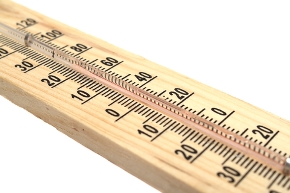Heat-Related Illnesses
Posted June 16, 2014

Types of Heat-Related Emergencies
These are three types of heat-related emergencies: Heat Cramps are muscular pains and spasms caused by heavy exertion. This is generally the result of a loss of water and salt through sweating. Heat Exhaustion is caused by fluid loss and decreased blood flow to your vital organs. This condition can produce flu-like symptoms. Heat Stroke is the most serious heat-related emergency and occurs when the body’s internal cooling system has failed. This is a life-threatening condition requiring immediate and aggressive action. The chart below provides information about the various signs and symptoms of the three main types of heat-related illnesses.
The Heat Index
The heat index is a method that combines air temperature and relative humidity to determine an apparent temperature or in other words, how hot it actually feels outside. The human body normally cools itself through perspiration (or sweating), when the water in sweat evaporates and carries heat away from the body. However, when the relative humidity is high, the evaporation rate of the water is reduced. This means that heat is removed from the body at a lower rate, causing it to retain more heat than it would in dry air. The heat index is important to know especially when doing physical work outdoors, as higher combinations of heat and humidity can make the body more susceptible to heat-related illnesses.
Preventing Heat-Related Emergencies
Know the signs and symptoms of the various types of heat-related illnesses. Take time to monitor yourself and be aware of your co-workers. If working outdoors, avoid long periods of direct sunlight. Use cooling fans to keep air circulating around your body. This helps aid your natural cooling process. Wear lightweight, light-colored and loose-fitting clothes when working in warm and humid environments. Drink primarily non-caffeinated fluids. Caffeine actually works against you because it is a diuretic and will cause you to lose more fluids than you are ingesting. Drinking water or other electrolyte products are best. Never wait until you feel thirsty to start hydrating – you are well on your way to becoming dehydrated when you feel thirsty. It is critical to your overall health to stay properly hydrated, especially when working in hot and humid environments.
Heat-Related Emergency Guide |
||
| The first step is always prevention. In hot and humid environments, always wear loose-fitting and lightweight clothes, take frequent breaks, drink lots of fluids, avoid caffeine (coffee and soda) and alcohol and do not stay in direct sunlight for long periods of time. | ||
|
Signs & Symptoms |
||
|
Heat Cramps |
Heat Exhaustion |
Heat Stroke |
|
Heat cramps are muscular pain and spasms due to heavy exertion. Generally thought to be caused by a loss of water and salt through sweating. |
Heat exhaustion is caused by fluid loss causing blood flow to decrease to vital organs. As a result of dehydration, victims often complain of flu-like symptoms hours after exposure. | Heat stroke is the most serious type of heat-related illness that is LIFE THREATENING and requires IMMEDIATE care. |
| Heat cramps usually occur during outdoor activities or strenuous activities. Can occur even when it does not seem very hot or humid. | Heat exhaustion is serious, but not life threatening, if identified and treated properly. Without treatment, heat exhaustion can lead to heat stroke. |
Heat stroke occurs when the body’s heat regulating system fails. Body temperatures raise to a point that brain damage and death may result, unless the body is cooled very quickly. |
|
Signs & Symptoms |
Signs & Symptoms |
Signs & Symptoms |
|
|
|
|
Treatment |
||
|
Heat Cramps |
Heat Exhaustion |
Heat Stroke |
|
|
|
|
General Guidelines and Reminders |
||
| Do not underestimate the seriousness of heat-related illnesses. Do not give medication to reduce fever and do not allow the victim to drink any caffeinated or alcoholic beverages. In heat-related emergencies, do not overlook other medical conditions that might be complicated by excessive heat. When in doubt, seek medical attention as soon as possible. | ||
This article is for general informational purposes only.
CLICK BELOW FOR A PRINTABLE VERSION FOR EMPLOYEE DISTRIBUTION:
